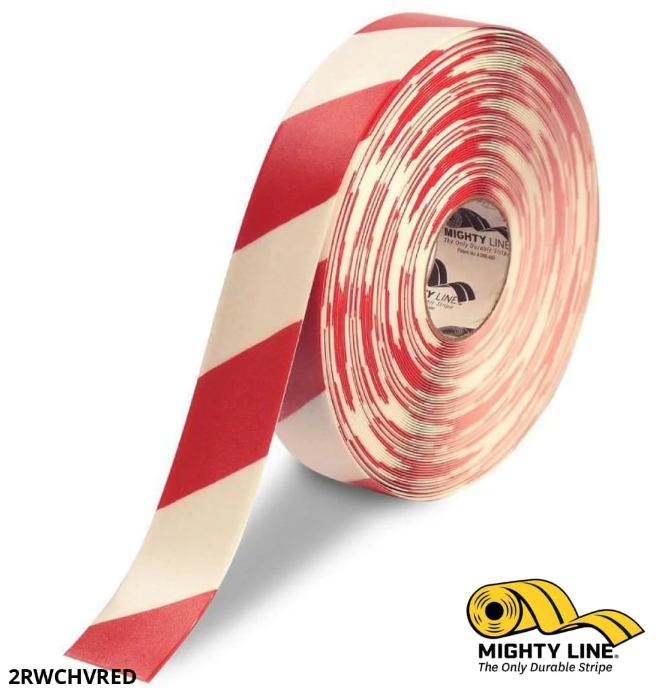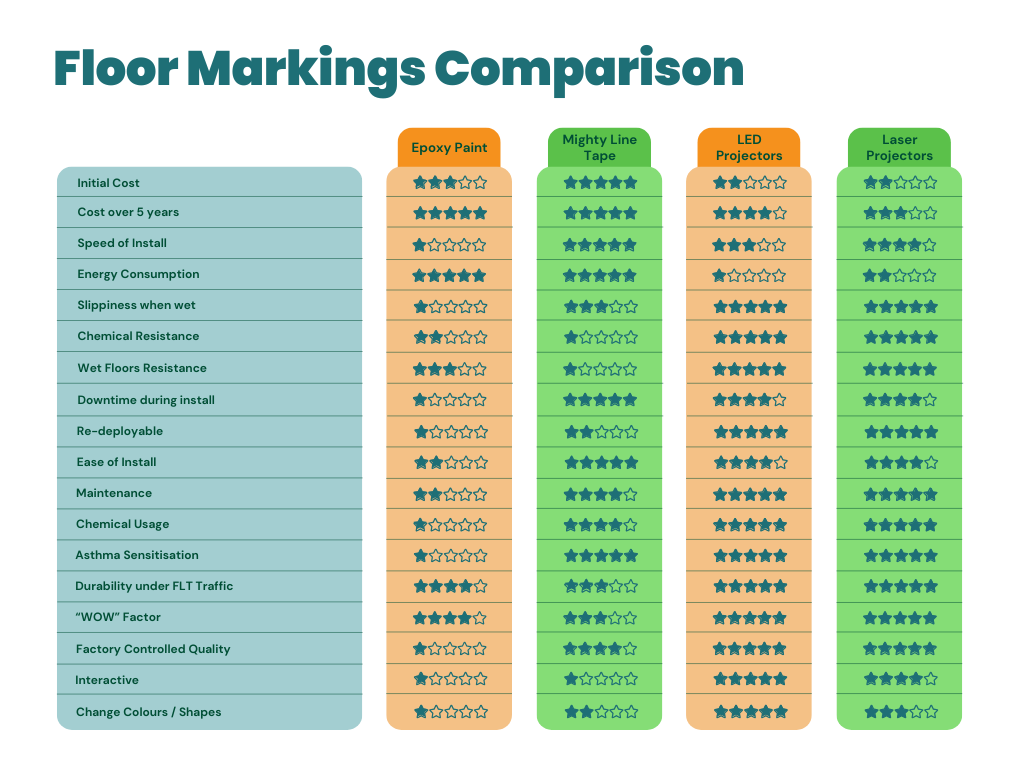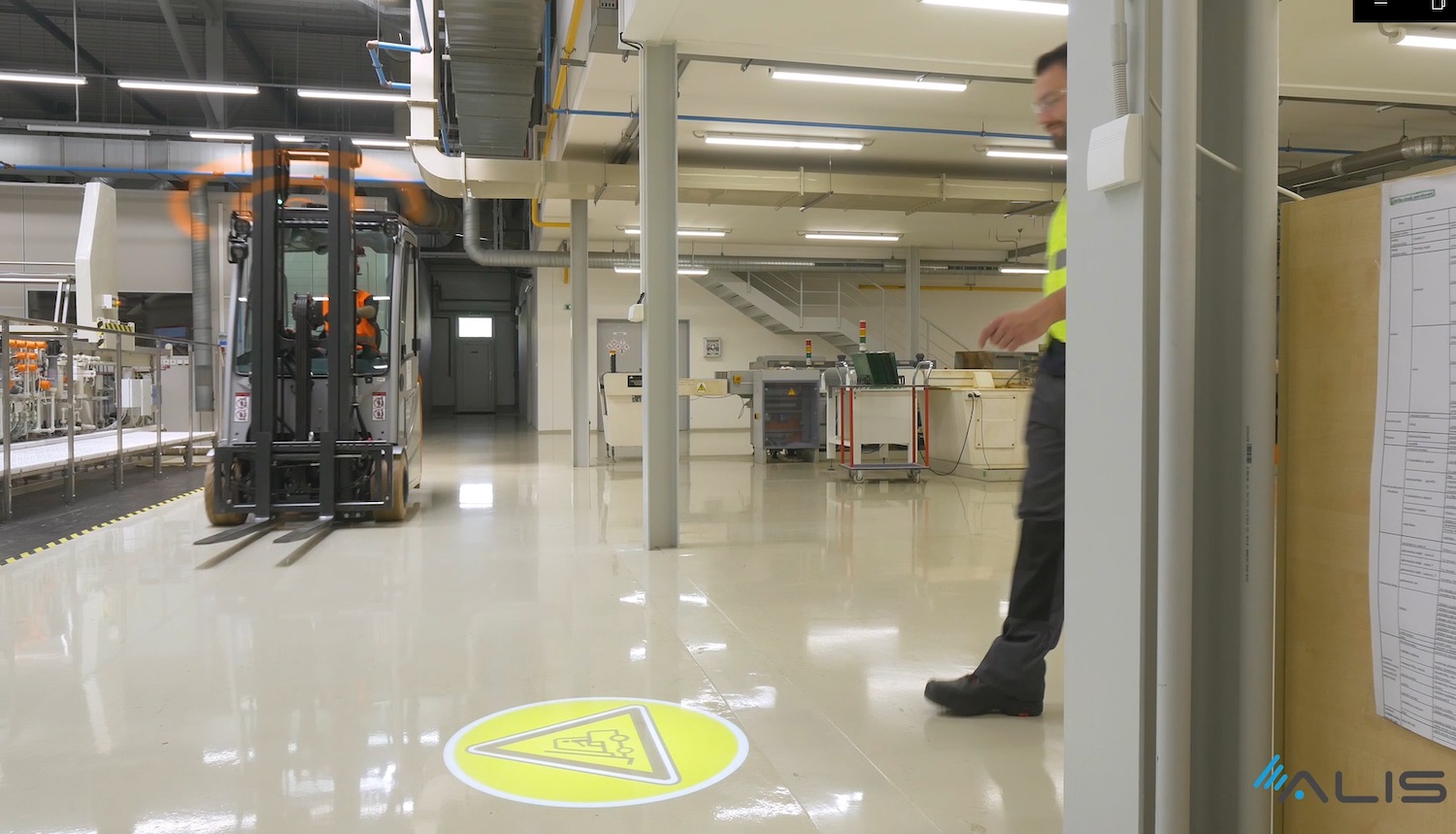How to apply floor tape for maximum durability
 By
Alana Graham
·
4 minute read
By
Alana Graham
·
4 minute read
One of the biggest problems for any factory manager, is constantly having to replace floor tape, that has been ripped up by forklift truck traffic.
Not only does this cost money to replace the tape, but also costs employees a lot of time per year, fixing the issue.
Whilst many managers have looked around for tapes that will be more “sticky” and not be ripped up by accident, this then means that once the tape needs to be taken up and moved, residue is left on the floor, which poses an entirely different problem all together.
In this article, you will learn about why it is important to apply floor tape properly, the types of tape available and how this affects the application, and how to apply the floor tape for maximum adhesion.
Contents:
- Why are floor tapes still commonly used in warehouses?
- Why is it beneficial to apply the tape properly?
- Types of floor tape available and how this affects the application
- Selecting the right floor tape
- Surface preparation
- How to ensure maximum adhesion
Why are floor tapes still commonly used in warehouses?
Floor tapes remain a staple in warehouses for several reasons. Firstly, they offer a cost-effective solution for marking pathways, hazard zones, and storage areas without the need for expensive equipment or installation. In addition, floor tapes, unlike painted lines that require drying time, are instantly ready for use once applied.
In fast-paced warehouse environments where agility is key, floor tapes can be quickly installed or changed to adapt to shifting needs without disruption.
And lastly, the durability of some modern floor tapes ensures longevity even under heavy foot traffic or machinery movement, at a fraction of the price of floor painting or LED projectors.
These qualities make floor tapes an indispensable tool in maintaining organisation and safety within warehouses worldwide.


Why is it beneficial to apply the tape properly?
Properly applied floor tape reduces the risk of accidents introduced by trip hazards and dangerous machinery in the workplace. This means that the placement of the tape is crucial, however the main focus of this article is about how to apply floor tape for maximum durability.
Properly applying floor tape in a warehouse is crucial as following the recommended application techniques, maximum adhesion is ensured, which can help you extend the lifespan of the tape. This means fewer replacements and maintenance efforts and costs in the long run.
Types of floor tape available and how this affects the application
When it comes to warehouse floor marking, there are various types of floor tape available to choose from, which can make the decision difficult.
There are 3 main points to consider when measuring the effectiveness of floor tape; initial tack, peel strength (T Peel) and shear strength. Every tape you will find on the market, varies in these areas, and whilst the application of these tapes may be the same, you will likely end up with very different results with each type of tape that you trial.
A very strong tape actually feels really low tack (how sticky it feels when you touch it). The type of tape used to stick a 13.6M long aluminium skin on a trailer can be easily peeled off within seconds of applying for example, as this is because it has a low initial tack. After 20 minutes - you will really struggle to peel the tape off, and after 3 days it will reach 100% strength.
Selecting the right floor tape
When it comes to selecting the right floor tape for your warehouse, there are a few key factors to consider. First and foremost, think about the specific requirements of your facility. Are you looking for a highly durable option that can withstand heavy traffic? Or do you need tape that can easily be removed without leaving residue behind? Or both?
Another important consideration is the surface where the tape will be applied. Make sure to choose a tape that is suitable for the material of your flooring to ensure maximum adhesion and longevity. Additionally, take into account any environmental factors such as temperature fluctuations or exposure to chemicals.
It's also crucial to look at the colour options available in floor tapes. Opting for through-colour tapes can help maintain visibility even as they wear down over time. This ensures clear demarcation lines on your warehouse floor for improved safety and organization.
If you need help selecting the right floor tape for your requirements, one of our experts can come on site to help you choose the correct one for you.
Surface Preparation
Surface preparation is a crucial step when it comes to applying floor tape in a warehouse for maximum durability. Before laying down the tape, the surface must be clean, dry and free of any debris or dust that could hinder adhesion.
Start by thoroughly cleaning the area where the tape will be applied using a degreaser or cleaner specifically designed for industrial surfaces. This ensures that there are no residues that could compromise the stickiness of the tape.
Next, make sure to dry the surface completely before moving on to apply the floor tape. Moisture can affect adhesion, so this step is essential for ensuring maximum durability.
If there are any existing tapes or markings on the floor, remove them carefully to create a smooth and even surface for the new tape application. Any imperfections underneath can cause issues with adherence and longevity.
How to ensure maximum adhesion
You can consider using a primer specifically designed for floor tapes to enhance adhesion even further.
Proper application technique is also key to maximizing adhesion. Press down firmly on the tape after it's placed to ensure it bonds well with the surface. Avoid air bubbles or wrinkles that could weaken its stickiness over time.
Lastly, give the adhesive enough time to set properly before subjecting it to heavy traffic or harsh conditions. This will allow for a strong bond between the tape and the floor, increasing its durability and performance in your warehouse environment.
In this article, you should have now learnt how to apply floor tape to ensure maximum adhesion. It is also important to get the right tape in the first place, and as we have supplied many factories throughout the UK with floor tape, we understand what a good one and a bad one looks like. If you want some assistance with this, or would like to trial a tape, get in touch with an expert here.




